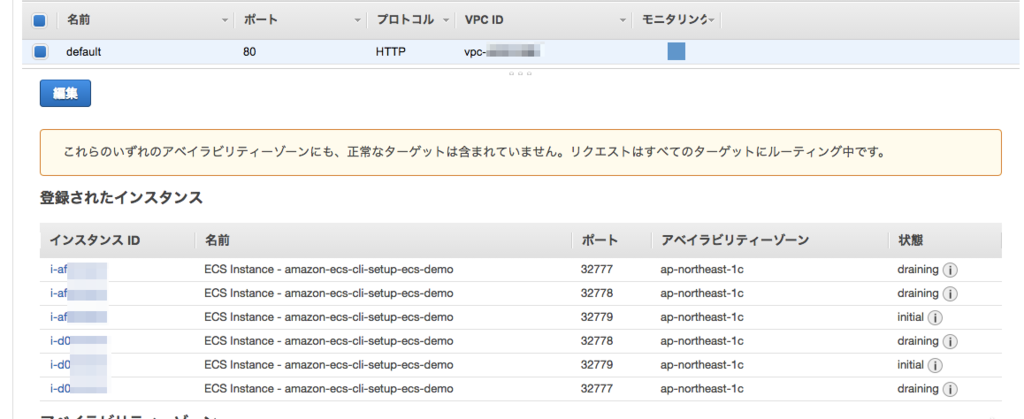ども、かっぱです。
tl;dr
mva.microsoft.com
上記の資料を参考に操作したメモ。
尚、操作する環境は以下の通り。
PS C:\Users\Administrator\Downloads> [System.Environment]::OSVersion
Platform ServicePack Version VersionString
-------- ----------- ------- -------------
Win32NT 6.3.9600.0 Microsoft Windows NT 6.3.9600.0
PS C:\Users\Administrator\Downloads> $PSVersionTable
Name Value
---- -----
PSVersion 4.0
WSManStackVersion 3.0
SerializationVersion 1.1.0.1
CLRVersion 4.0.30319.42000
BuildVersion 6.3.9600.17400
PSCompatibleVersions {1.0, 2.0, 3.0, 4.0}
PSRemotingProtocolVersion 2.2
要件
クラウドサービスを作成する
run
New-AzureService -ServiceName "oreno-cloudservice" -Location "Japan West" -Label "oreno-cloudservice"
output
OperationDescription OperationId OperationStatus
-------------------- ----------- ---------------
New-AzureService xxxxxxxxx-xxxx-xxxx-xxxx-xxxxxxxxxxx Succeeded
Ubuntu Server 16.04 の OS イメージを取得する
run
$ImageName = @(Get-AzureVMImage `
| ? {$_.OS -eq "Linux" -and $_.ImageFamily -eq "Ubuntu Server 16.04 LTS"} `
| Sort-Object PublishedDate –Descending `
| Select-Object -First 1).ImageName
confirm
PS C:\Users\Administrator> $ImageName
b39f27a8b8c64d52b05eac6a62ebad85__Ubuntu-16_04-LTS-amd64-server-20160815-en-us-30GB
以下のように実行すると OS イメージの各種情報が一覧で取得することが出来る。(参考:Windows Azure 仮想マシンの展開可能なイメージ一覧を取得する)
run
Get-AzureVMImage | Sort-Object OS,Label,PublishedDate | Format-Table OS,Label,PublishedDate,ImageName -AutoSize
New-AzureQuickVM を利用して仮想マシンを起動する
run
New-AzureQuickVM `
-Linux `
-ImageName $ImageName `
-LinuxUser "ubuntu" `
-Password "xxxxxxxxxxxxxxxxxxx" `
-ServiceName "oreno-cloudservice" `
-Name "vm01" `
-InstanceSize "ExtraSmall" `
-Location "Japan West" `
-Verbose
New-AzureQuickVM `
-Linux `
-ImageName $ImageName `
-LinuxUser "ubuntu" `
-Password "xxxxxxxxxxxxxxxxxxx" `
-ServiceName "oreno-cloudservice" `
-Name "vm02" `
-InstanceSize "ExtraSmall" `
-Location "Japan West" `
-Verbose
output
警告: No deployment found in service: 'oreno-cloudservice'.
詳細: 9:36:33 - Begin Operation: New-AzureQuickVM
詳細: 9:36:33 - Completed Operation: New-AzureQuickVM
詳細: 9:36:34 - Begin Operation: New-AzureQuickVM - Create Deployment with VM vm01
OperationDescription OperationId OperationStatus
-------------------- ----------- ---------------
New-AzureQuickVM xxxxxxxxx-xxxx-xxxx-xxxx-xxxxxxxxxxx Succeeded
詳細: 9:37:39 - Completed Operation: New-AzureQuickVM - Create Deployment with VM vm01
インスタンスサイズは以下のような指定を行う。(参考:Azure の仮想マシンのサイズ)
- Basic_A0: Basic_A0
- Basic_A1: Basic_A1...(A4 まで Basic_A4)
- Standard_A0: ExtraSmall
- Standard_A1: Small
- Standard_A2: Medium
- Standard_A3: Large
- Standard_A4: ExtraLarge
- Standard_A5: A5
- Standard_A6: A6...(A11 まで A11)
- D1: Standard_D1
- D2: Standard_D2...(D14 まで Standard_D14)
confirm
PS C:\Users\Administrator> Get-AzureVM
ServiceName Name Status
----------- ---- ------
oreno-cloudservice vm01 RoleStateUnknown
oreno-cloudservice vm02 RoleStateUnknown
confirm
PS C:\Users\Administrator\Downloads> Stop-AzureVM -ServiceName "oreno-cloudservice" -Name "vm03"
確認
The specified virtual machine is the last virtual machine in this deployment. Continuing will result in a new IP address for your
deployment. To shut down without losing the deployment IP use -StayProvisioned.
[Y] はい(Y) [N] いいえ(N) [S] 中断(S) [?] ヘルプ (既定値は "Y"): Y
OperationDescription OperationId OperationStatus
-------------------- ----------- ---------------
Stop-AzureVM xxxxxxxxx-xxxx-xxxx-xxxx-xxxxxxxxxxx Succeeded
PS C:\Users\Administrator\Downloads> Stop-AzureVM -ServiceName "oreno-cloudservice" -Name "vm02" -Force
OperationDescription OperationId OperationStatus
-------------------- ----------- ---------------
Stop-AzureVM xxxxxxxxx-xxxx-xxxx-xxxx-xxxxxxxxxxx Succeeded
confirm
PS C:\Users\Administrator\Downloads> Remove-AzureVM -ServiceName "oreno-cloudservice" -Name "vm01"
OperationDescription OperationId OperationStatus
-------------------- ----------- ---------------
Remove-AzureVM xxxxxxxxx-xxxx-xxxx-xxxx-xxxxxxxxxxx Succeeded
PS C:\Users\Administrator\Downloads> Remove-AzureVM -ServiceName "oreno-cloudservice" -Name "vm02"
OperationDescription OperationId OperationStatus
-------------------- ----------- ---------------
Remove-AzureVM xxxxxxxxx-xxxx-xxxx-xxxx-xxxxxxxxxxx Succeeded
memo
New-AzureQuickVM : CurrentStorageAccountName is not accessible. エラーの対処
エラー
New-AzureQuickVM 実行時に以下のようなエラーを確認。
警告: No deployment found in service: 'oreno-cloudservice'.
New-AzureQuickVM : CurrentStorageAccountName is not accessible. Ensure the current storage account is accessible and in the same location or affinity group as your cloud service.
発生場所 行:1 文字:1
+ New-AzureQuickVM `
+ ~~~~~~~~~~~~~~~~~~
+ CategoryInfo : CloseError: (:) [New-AzureQuickVM]、ArgumentException
+ FullyQualifiedErrorId : Microsoft.WindowsAzure.Commands.ServiceManagement.IaaS.PersistentVMs.NewQuickVM
サブスクリプションの CurrentStorageAccountName が以下のように未定義な為に発生する。ストレージアカウントを作成して CurrentStorageAccountName に StorageAccountName を定義する必要がある。
PS C:\Users\Administrator\Downloads> Get-AzureSubscription
SubscriptionId : 123456789-1234-1234-1234-123456789012
SubscriptionName : XXXXXXXXXXXX
Environment : AzureCloud
DefaultAccount : xxxxxxxxxxxxxxxxxxxxxxxxxxxxxxxxxxxxxxxxxxxxxxxxxx
IsDefault : True
IsCurrent : True
TenantId :
CurrentStorageAccountName :
サブスクリプションを Import した直後は上記のように CurrentStorageAccountName が空欄になっていた。
ストレージアカウントを作成
New-AzureStorageAccount `
-StorageAccountName "xxxxxxxxxxxx" `
-Label "xxxxxxxxxxxx" `
-Location "Japan West" `
-Type "Standard_LRS"
ストレージアカウントタイプ(-type)は以下の何れかを指定する。
| -type で指定する値 |
ストレージタイプ |
| Standard_LRS |
標準的なローカル冗長ストレージ |
| Standard_ZRS |
標準ゾーン冗長ストレージ |
| Standard_GRS |
標準的な地理冗長ストレージ |
| Standard_RAGRS |
標準の読み取りアクセス地理冗長ストレージ |
OperationDescription OperationId OperationStatus
-------------------- ----------- ---------------
New-AzureStorageAccount xxxxxxxxx-xxxx-xxxx-xxxx-xxxxxxxxxxx Succeeded
PS C:\Users\Administrator\Downloads> Get-AzureStorageAccount
Context : Microsoft.WindowsAzure.Commands.Common.Storage.LazyAzureStorageContext
StorageAccountDescription :
AffinityGroup :
Location : Japan West
GeoPrimaryLocation : Japan West
GeoSecondaryLocation :
Label : xxxxxxxxxxxx
StorageAccountStatus : Created
StatusOfPrimary : Available
StatusOfSecondary :
Endpoints : {https://xxxxxxxxxxxx.blob.core.windows.net/, https://xxxxxxxxxxxx.queue.core.windows.net/,
https://xxxxxxxxxxxx.table.core.windows.net/, https://xxxxxxxxxxxx.file.core.windows.net/}
AccountType : Standard_LRS
LastGeoFailoverTime :
MigrationState :
StorageAccountName : xxxxxxxxxxxx
OperationDescription : Get-AzureStorageAccount
OperationId : xxxxxxxxx-xxxx-xxxx-xxxx-xxxxxxxxxxx
OperationStatus : Succeeded
Set-AzureSubscription `
-SubscriptionName "XXXXXXXXXXXX" `
-CurrentStorageAccountName (Get-AzureStorageAccount).StorageAccountName `
-PassThru
Id : 123456789-1234-1234-1234-123456789012
Name : XXXXXXXXXXXX
Environment : AzureCloud
Account : xxxxxxxxxxxxxxxxxxxxxxxxxxxxxxxxxxxxxxxxxxxxxxxxxx
State :
Properties : {[Default, True], [StorageAccount, BlobEndpoint=https://xxxxxxxxxxxx.blob.core.windows.net/;QueueEndpoint
=https://xxxxxxxxxxxx.queue.core.windows.net/;TableEndpoint=https://xxxxxxxxxxxx.table.core.windows.net/;
FileEndpoint=https://xxxxxxxxxxxx.file.core.windows.net/;AccountName=xxxxxxxxxxxx;AccountKey=xxxxxxxxxxxx
xxxxxxxxxxxxxxxxxxxxxxxxxxxxxxxxxxxxxxxxxxxxxxxxxxxxxxxxxxxxxxxxxxxxxxxxxxx]}
PS C:\Users\Administrator\Downloads> Get-AzureSubscription
SubscriptionId : 123456789-1234-1234-1234-123456789012
SubscriptionName : XXXXXXXXXXXX
Environment : AzureCloud
DefaultAccount : xxxxxxxxxxxxxxxxxxxxxxxxxxxxxxxxxxxxxxxxxxxxxxxxxx
IsDefault : True
IsCurrent : True
TenantId :
CurrentStorageAccountName : xxxxxxxxxxxx
基本階層
- A シリーズ
- 負荷分散機能と自動スケール機能が無い
- ディスクの IOPS は 300
標準階層
- 負荷分散機能が利用可能
- 高可用セットを設定することで、自動スケールを構成が可能
- A / D / G シリーズ
- A シリーズ
- IOPS は 500
- D シリーズ
- A シリーズの 2 倍のメモリ構成
- 一時ディスクに SSD を使用
- G シリーズ
- Xeon プロセッサ E5 v3 と D シリーズの 2 倍のメモリ
- データディスクにプレミアムストレージを使用出来る(最大で 6.59TB x 64 まで)















